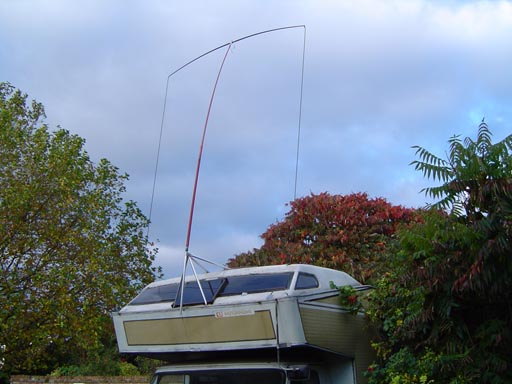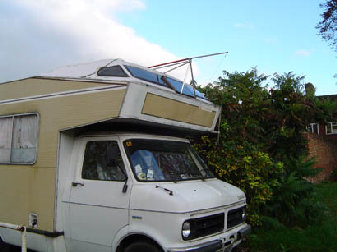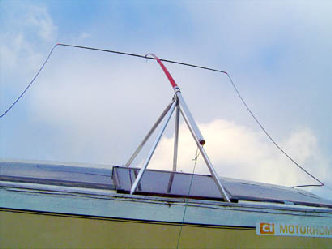|
Join my Mailing List to keep up to date with my projects. Email Address:
|
The G0CWT Small Tuned Loop |
|||
| I will first describe a 40-meter loop that can be placed in almost any location; I have one mounted on the roof of my mobile home. It can be pulled up into position from inside the vehicle in less than 3 seconds. | |||
|
|
|||
|
First, I will describe the 40-meter version, The element is one-quarter wavelength of wire or coax minus about 5% and is approximately 32 foot long. To support this loop I use a fiberglass fishing rod for the vertical support and a six-foot spreader, which is made from fishing rod tops.
The tuning and matching unit is mounted inside the roof of the van where it is easily accessible. This removes the need for remote control tuning it also allows me to make many tests and experiments. Below is a picture showing an MFJ259 analyzer that has been modified by wiring a digital meter across the MFJ impedance meter to resolve a more accurate reading.
|
|||
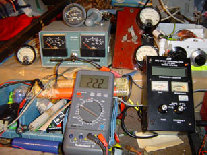 |
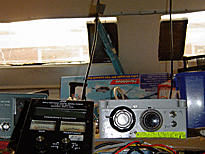 |
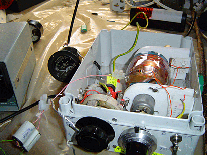 |
|
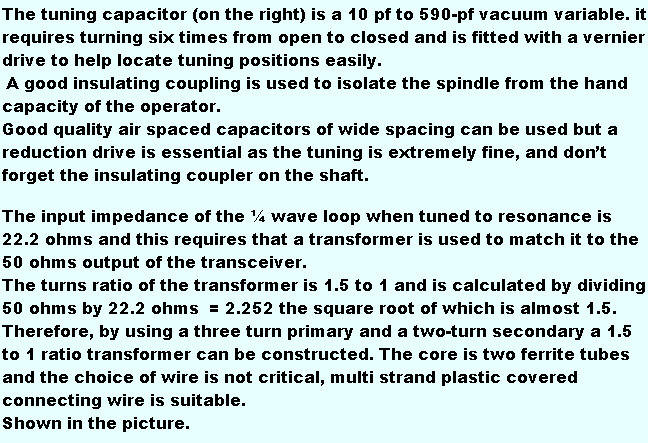 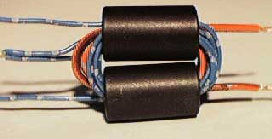 |
|||
|
On 80 meters, the loop becomes a 1/8 wave and the input impedance is now
only 2.249 ohm and the transformer turns ratio is approximately (4.5 to
1) this is 9 turns to 2.
This transformer
will then match the 50 ohms of the transceiver to the input impedance
of the loop at 1/4, 1/8, and 1/16 wave. This means that you can switch
through 40, 80, and 160, by using a suitable switch to the primary
of the transformer.
|
|||
|
All rights reserved. © B Edginton. 2004 |
|||
